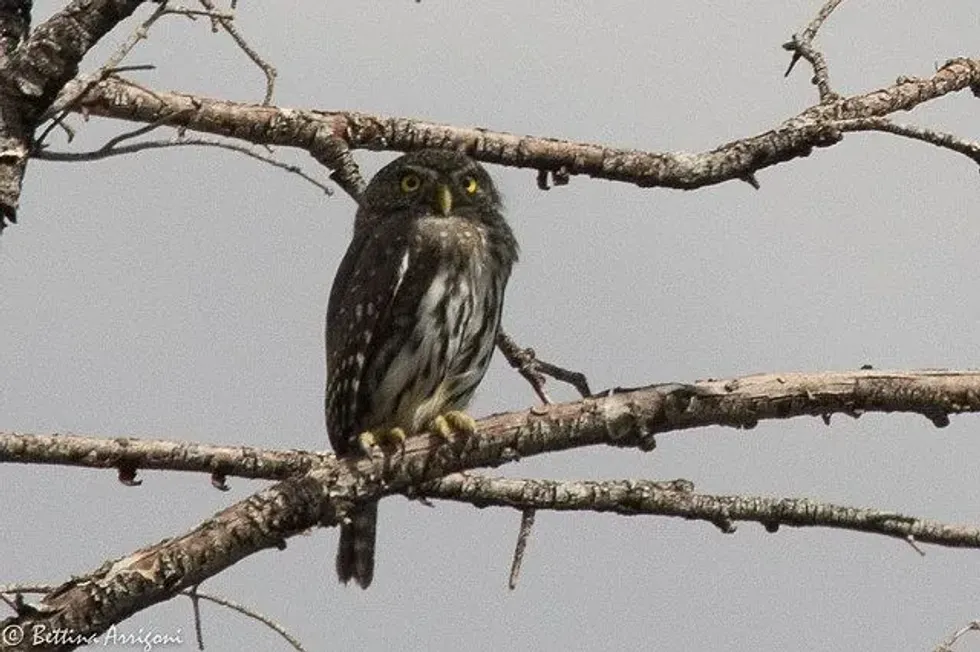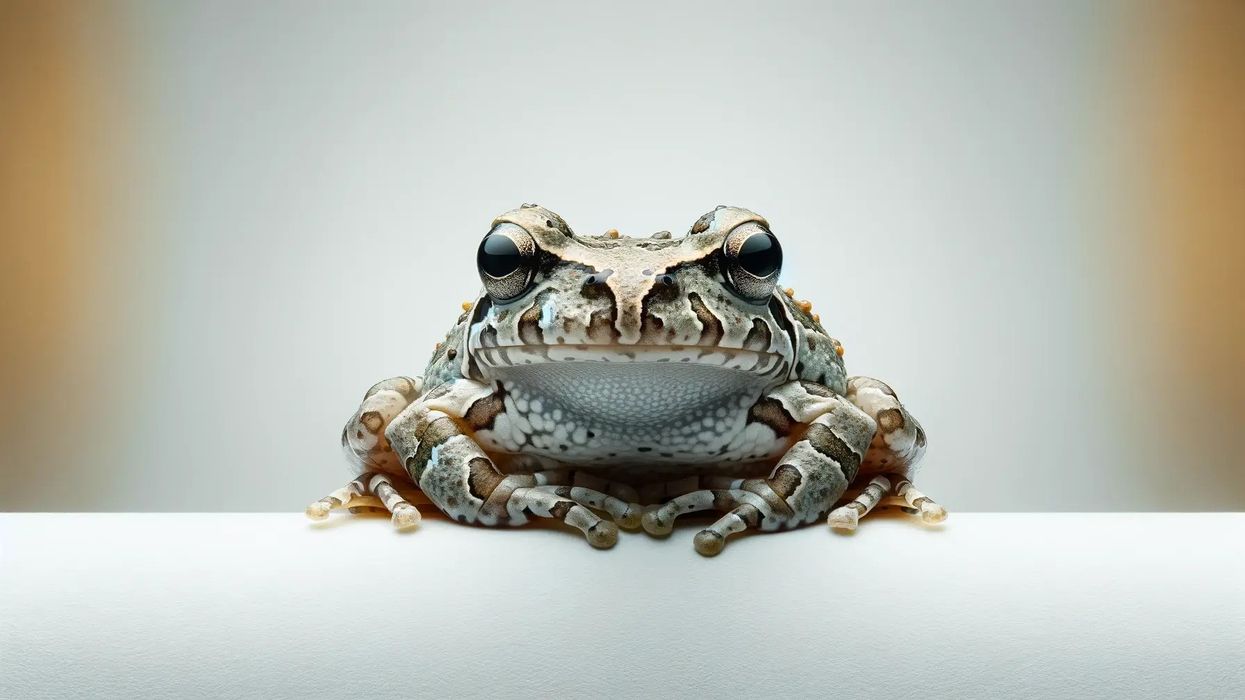Ever heard people saying that the darkness is where secrets are best hidden and the nighttime brings clarity and focus on owls, even if the aperture of this vision comes with a stigma? Ever wondered why is it said?
The owls are birds most active during dusk and dawn, i.e. at night, however, the pygmy owls are partially diurnal.
A mountain pygmy owl, Glaucidium gnoma, is one of the North American birds. While it is speculated to be one of the subspecies of a northern pygmy owl (Glaucidium gnoma), it is often regarded as conspecific to the northern pygmy owl, considering the origin of the mountain pygmy owl scientific name.
These owls with a body comparatively smaller and bright yellow eyes inhabit the young forest of North America. The mountain northern pygmy owls nest in the cavities of the tree, especially old woodpecker holes.
They are mostly dark with white spottings and have long tails, rounded heads with false eyes at their back and fine white spots, as well as inconspicuous ear-tufts.
The male and the female are generally similar in appearance, while the color of the feathers on their head vary in accordance with their habitation. The mountain northern pygmy owls are aggressive predators and capable fliers as are speculated to catch their prey in flight.
If the uniqueness of the mountain pygmy owl makes you interested to read more about similar species, you can read about the ani bird and flammulated owl.
Mountain Pygmy Owl Interesting Facts
What type of animal is a mountain pygmy owl?
The mountain pygmy owl is one of the North American birds. It is considered a subspecies of the northern pygmy owl, Glaucidium gnoma. It is speculated to have partially diurnal habits and the 'toot-took' call of the owl is generally common at dawn and dusk.
What class of animal does a mountain pygmy owl belong to?
The mountain pygmy owl is a subspecies of the northern pygmy owls. It belongs to the class Aves, order Strigiformes, family Strigidae, and genus Glaucidium gnoma. The bird is an aggressive predator catching its prey in flight.
How many mountain pygmy owls are there in the world?
The population of the mountain pygmy owl is not quantified. While the owl closely related to the northern pygmy owl is categorized as Least Concern under the IUCN Red List of Threatened Species, the speculations highlight a small size population as the northern pygmy owls are quite uncommon.
Where does a mountain pygmy owl live?
The distribution of northern pygmy owl has no wide range. On the other hand, the mountain pygmy owl – with mountains and forests as their native location on the map – are recorded nesting in North America from southern Arizona to New Mexico. Its range map also highlights the forest of central Mexico, Sonara, Chihuahua, Oaxaca, Coahuila, and Tamaulipas.
What is a mountain pygmy owl's habitat?
The mountain pygmy owl is speculated to be a subspecies of northern pygmy owls that inhabits a wide forest range.
Its habitat varies from the coniferous forest to mixed forest on mountainous regions from about 4920-8200 ft (1500- 2500 m).
Furthermore, studying its range map, it was speculated that the owl prefers to reside near steams as it prevents the bird from being caught as prey, and also, due to its camouflaging capability, the bird escapes ambush attacks from its predators too. The owl's nest is recorded in the cavities of the trees.
Although is poorly studied whether the owl builds its own nest and which sex builds the nest, the subspecies of northern pygmy owls live in holes in the trees – especially in a nest of the old woodpecker.
Who do mountain pygmy owls live with?
The mountain pygmy owl, a tiny owl from the family Strigidae, leads a solitary life. The northern pygmy owl is speculated to be territorial. Furthermore, the owls do not shy away from human habilitation.
How long does a mountain pygmy owl live?
While the lifespan of the mountain pygmy owl remains undeciphered, the northern pygmy owl lives up to seven years. On the other hand, a pink cockatoo is reported to be the longest living bird.
How do they reproduce?
The mountain pygmy owl breeds from April to June. The breeding and nesting are reported to mostly take place in the hole of the tree. Calls chasing potential mates are quite common around the breeding season.
The female lays a clutch of eggs that range from two to seven eggs. While the females incubate the eggs, male birds prey and gather food for the young birds and females.
The eggs hatch into young birds within 29 days. The young birds hatch and attain a mature appearance within two weeks as they grow quickly. The young birds are groomed by their parent birds until they begin to fly.
What is their conservation status?
The conservation status of the mountain pygmy owl is listed as Least Concern under the IUCN Red List of Threatened Species. The owls are reported to have a small range and are at risk due to habitat loss or the predators such as cats and hawks.
Mountain Pygmy Owl Fun Facts
What do mountain pygmy owls look like?
The mountain pygmy owls are small birds and have white, brown, and gray plumage. The birds have bright yellow eyes and have false eyes at the mountain pygmy owl back of their heads.
The bellies of the birds are white with brown vertical stripes running down from their chest. The heads of the owls are rounded but lack ear tufts. While the birds have long tails, and the feet are yellow in color.
How cute are they?
The mountain pygmy owl, a small-sized owl, is sure to win your heart with its unique appearance. Also, the false eyes at the back of the head are sure to either surprise you or leave you in a dilemma. Moreover, the calls are speculated to be quite melodious and thus, a pleasure to hear.
How do they communicate?
The mountain pygmy owl uses vocalizations such as a call or hoot. Its typical call often sounds like a 'toot-took' voice note and mountain pygmy owl hooting is speculated to be used to warn or attract its potential mate.
How big is a mountain pygmy owl?
The mountain pygmy owl is as long as 6-7 in (16-18 cm). Furthermore, it is four times smaller than a great gray owl, i.e. one of the biggest species of owls.
How fast can a mountain pygmy owl fly?
While the exact speed of a mountain pygmy owl is not computed so far, it is recorded to be a capable flier as it does prey on a variety of creatures to gather its food.
How much does a mountain pygmy owl weigh?
The mountain pygmy owl weighs up to 1.6-2.5 oz (48-73 g).
What are the male and female names of the species?
There are no sex-specific names of the owls.
What would you call a baby mountain pygmy owl?
A baby owl is called an owlet.
What do they eat?
The mountain pygmy owls mostly prey and gather their food during dusk and dawn as they are most active in the dark. The diet of the mountain pygmy owl comprises insects, small mammals, birds, and reptiles. Grasshoppers, locusts, crickets, and beetles are primary to their diet.
Are they dangerous?
The owls do not pose any danger to humans until threatened. On the other hand, they are aggressive hunters and preys upon various animals. It is also reported to prey upon animals bigger than their own size.
Would they make a good pet?
Owls are wild birds and thus, do not make an ideal pet.
Did you know...
The northern pygmy owls have four subspecies: the Pacific pygmy owl residing in the south of the United States, coastal pygmy owl inhabiting the coniferous forest from California to Alaska, Rocky Mountain pygmy owl found in the Rocky Mountains of the south of the United States, and Vancouver mountain pygmy owl endemic to the Vancouver Islands.
Also, the mountain pygmy owl is considered one of its subspecies and is often called the Arizona mountain pygmy owl as it is quite common in southern Arizona.
On the contrary, it is speculated to be conspecific considering the origin of the mountain pygmy owl's scientific name.
The owls are said to sleep with their eyes open but there are no reports confirming this.
Do mountain pygmy owls migrate?
No, the mountain pygmy owl does not migrate.
Are mountain pygmy owls endangered?
No, the mountain pygmy owls are not thought to be Endangered but are at risk due to habitat loss or predators.
Here at Kidadl, we have carefully created lots of interesting family-friendly animal facts for everyone to discover! For more relatable content, check out these rufous owl facts and burrowing owl facts for kids.
You can even occupy yourself at home by coloring in one of our free printable mountain pygmy owl coloring pages.










